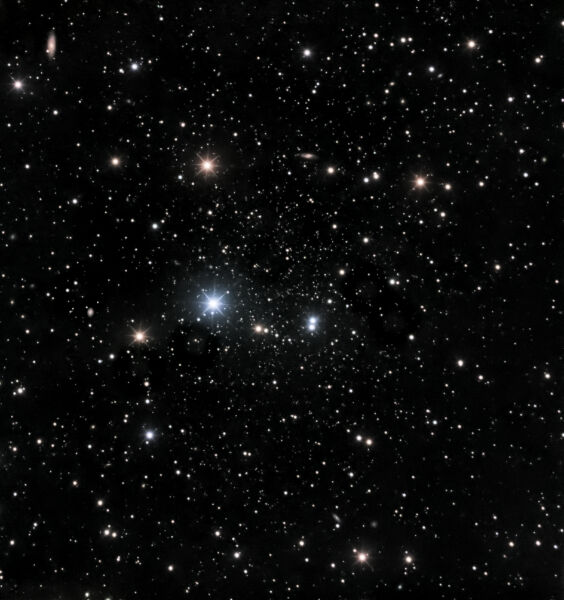This spheroidal dwarf galaxy orbiting our own Milky Way galaxy was only discovered in 1954. It is around 2700 lightyears in diameter and lies at a distance of approximately 260,000 lightyears. It is one of the faintest of our satellite galaxies and is indicated only by the slightly greater incidence of fainter stars, at the centre of this image.
Recent research indicates that it contains a large amount of dark matter.
This image is unusual, in being the result of 26 hours of LRGB data capture from two telescope and camera systems.
A total of 16 hours of data was captured from Horsham, over 12 evenings in April, May and June 2025. A ZWO ASI2600MM Pro camera was used, through an 8-inch Teleskop-Service Ritchey-Chretien reflector.
Ten hours of data was also remotely captured from Utah, over 11 evenings in June, July and August 2025. An FLI PL6303E CCD camera was used, through a 17-inch Planewave CDK reflector.
The data was then merged and processed together in Astropixelprocessor. The six-pointed stars in this image are a consequence of the cameras being 45 degrees apart in orientation.
Date: 02/08/2025
Location: Horsham, West Sussex
Photographer: Graham Wilcock
